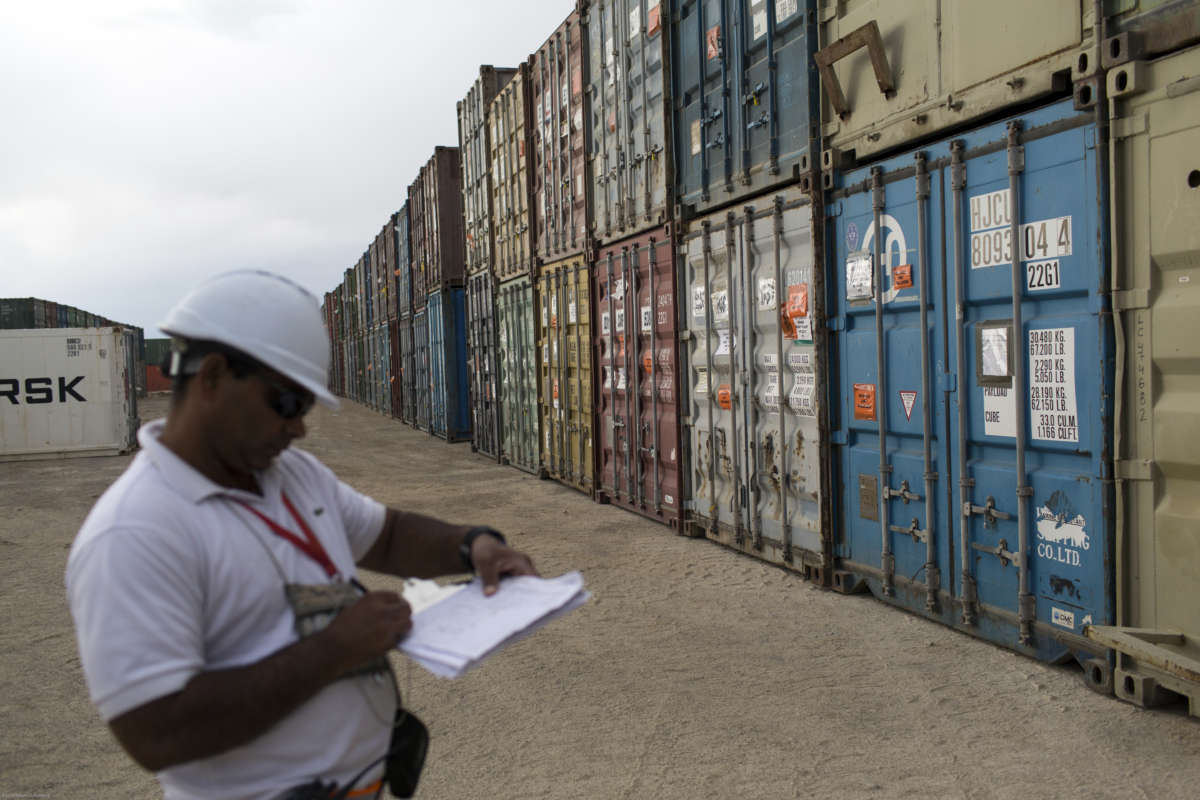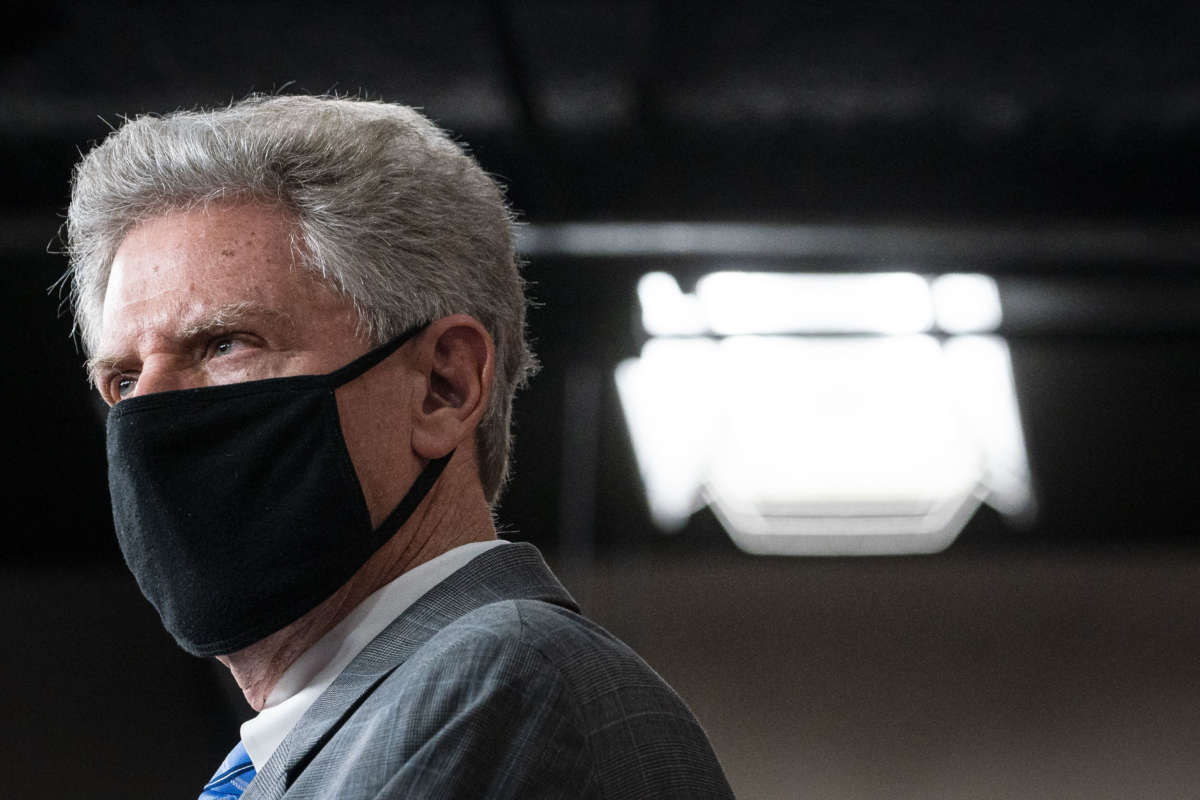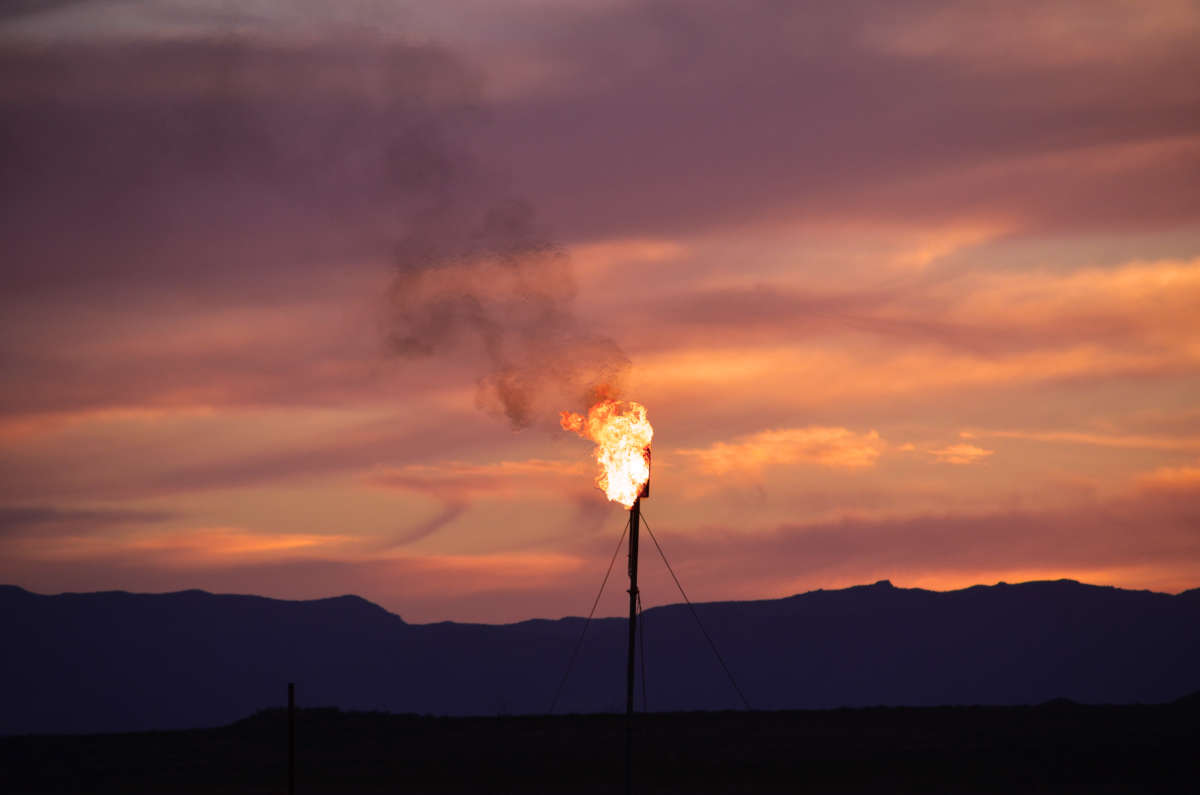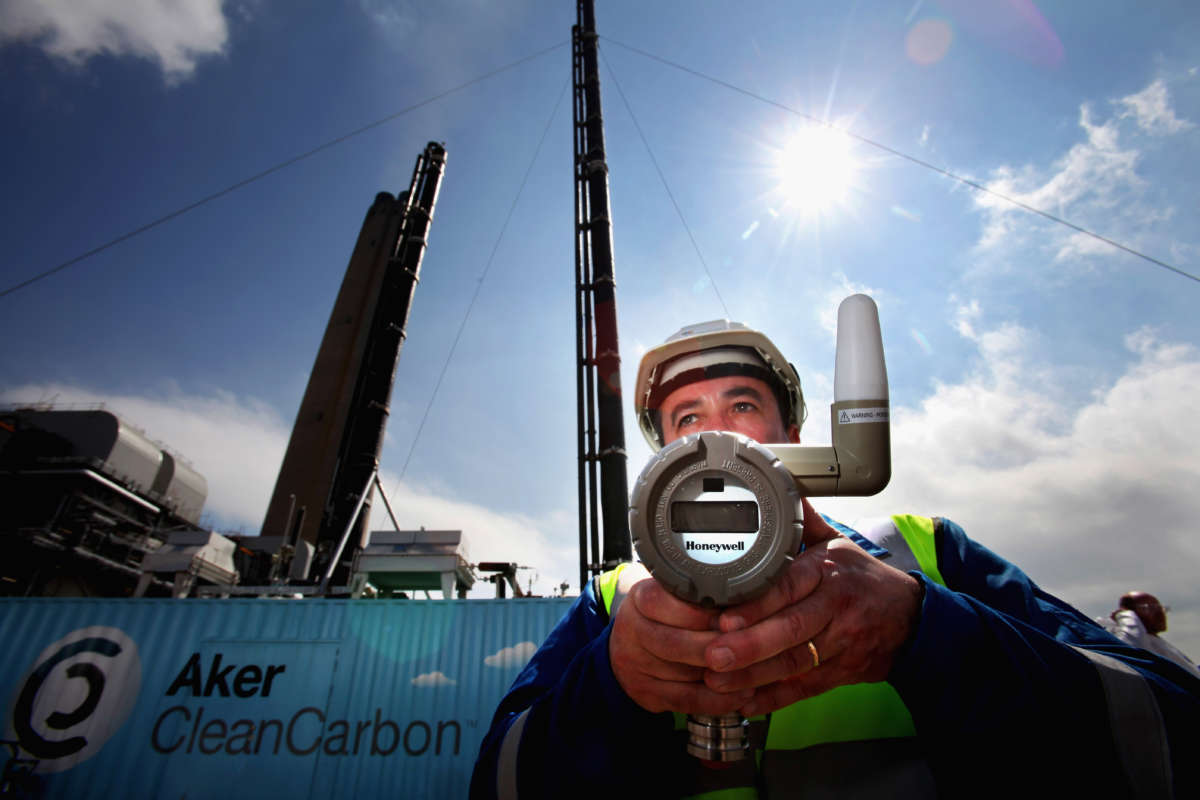
That decision set in motion a cycle of violence and chaos that no subsequent U.S. policy or military strategy could resolve over the next 20 years, in Afghanistan, Iraq or any of the other countries swept up in America’s post-9/11 wars.
While Americans were reeling in shock at the images of airliners crashing into buildings on Sept. 11, 2001, Defense Secretary Donald Rumsfeld held a meeting in an intact part of the Pentagon. Undersecretary Stephen Cambone’s notes from that meeting spell out how quickly and blindly U.S. officials prepared to plunge our nation into graveyards of empire in Afghanistan, Iraq and beyond.
Cambone wrote that Rumsfeld wanted, “best info fast. Judge whether good enough hit S.H. [Saddam Hussein] at same time — not only UBL [Usama bin Laden].… Go massive. Sweep it all up. Things related and not.”
So within hours of these horrific crimes in the United States, the central question senior U.S. officials were asking was not how to investigate them and hold the perpetrators accountable, but how to use this “Pearl Harbor” moment to justify wars, regime changes and militarism on a global scale.
Three days later, Congress passed a bill authorizing the president to use military force “against those nations, organizations, or persons he determines planned, authorized, committed, or aided the terrorist attacks that occurred on September 11, 2001, or harbored such organizations or persons.”
In 2016, the Congressional Research Service reported that this Authorization for the Use of Military Force (AUMF) had been cited to justify 37 distinct military operations in 14 different countries and at sea. The vast majority of the people killed, maimed or displaced in these operations had nothing to do with the crimes of September 11. Successive administrations have repeatedly ignored the actual wording of the authorization, which only authorized the use of force against those involved in some way in the 9/11 attacks.
The only member of Congress who had the wisdom and courage to vote against the 2001 AUMF was Rep. Barbara Lee of Oakland, California. Lee compared it to the 1964 Gulf of Tonkin resolution and warned her colleagues that it would inevitably be used in the same expansive and illegitimate way. The final words of her floor speech echo presciently through the 20-year-long spiral of violence, chaos and war crimes it unleashed, “As we act, let us not become the evil we deplore.”
In a meeting at Camp David that weekend, Deputy Defense Secretary Paul Wolfowitz argued forcefully for an attack on Iraq, even before Afghanistan. President George W. Bush insisted that Afghanistan must come first, but privately promised Defense Policy Board chairman Richard Perle that Iraq would be their next target.
In the days after September 11, the U.S. corporate media followed the Bush administration’s lead, and the public heard only rare, isolated voices questioning whether war was the correct response to the crimes committed.
But former Nuremberg war crimes prosecutor Ben Ferencz spoke to NPR a week after 9/11, and he explained that attacking Afghanistan was not only unwise and dangerous, but was not a legitimate response to these crimes. NPR’s Katy Clark struggled to understand what he was saying:
Clark: Do you think that the talk of retaliation is not a legitimate response to the death of 5,000 (sic) people?
Ferencz: It is never a legitimate response to punish people who are not responsible for the wrong done.
Clark: No one is saying we’re going to punish those who are not responsible.
Ferencz: We must make a distinction between punishing the guilty and punishing others. If you simply retaliate en masse by bombing Afghanistan, let us say, or the Taliban, you will kill many people who don’t believe in what has happened, who don’t approve of what has happened.
Clark: So you are saying that you see no appropriate role for the military in this.
Ferencz: I wouldn’t say there is no appropriate role, but the role should be consistent with our ideals. We shouldn’t let them kill our principles at the same time they kill our people. And our principles are respect for the rule of law. Not charging in blindly and killing people because we are blinded by our tears and our rage.
The drumbeat of war pervaded the airwaves, twisting 9/11 into a powerful propaganda narrative to whip up the fear of terrorism and justify the march to war. But many Americans shared the reservations of Lee and Ferencz, understanding enough of their country’s history to recognize that the 9/11 tragedy was being hijacked by the same military-industrial complex that produced the debacle in Vietnam and keeps reinventing itself generation after generation to support and profit from American wars, coups and militarism.
On Sept. 28, 2001, the Socialist Worker website published statements by 15 writers and activists under the heading, “Why we say no to war and hate.” They included Noam Chomsky, the Revolutionary Association of the Women of Afghanistan and a co-author of this article (Medea Benjamin). Our statements took aim at the Bush administration’s attacks on civil liberties at home and abroad, as well as its plans for war on Afghanistan.
The late academic and author Chalmers Johnson wrote that 9/11 was not an attack on the United States but “an attack on U.S. foreign policy.” Edward Herman predicted “massive civilian casualties.” Matt Rothschild, editor of The Progressive, wrote that, “For every innocent person Bush kills in this war, five or ten terrorists will arise.” I (Medea) wrote that “a military response will only create more of the hatred against the U.S. that created this terrorism in the first place.”
Our analysis was correct and our predictions were prescient. We humbly submit that the media and politicians should start listening to the voices of peace and sanity instead of to lying, delusional warmongers.
What leads to catastrophes like the U.S. war in Afghanistan is not the absence of convincing antiwar voices but the fact that our political and media systems routinely marginalize and ignore voices like those of Barbara Lee, Ben Ferencz and ourselves.
That is not because we are wrong and the belligerent voices they listen to are right. They marginalize us precisely because we are right and they are wrong, and because serious, rational debates over war, peace and military spending would jeopardize some of the most powerful and corrupt vested interests that dominate and control U.S. politics on a bipartisan basis.
In every foreign policy crisis, the very existence of our military’s enormous destructive capacity and the myths our leaders promote to justify it converge in an orgy of self-serving interests and political pressures to stoke our fears and pretend that they have military “solutions.”
Losing the Vietnam War was a serious reality check on the limits of U.S. military power. As the junior officers who fought in Vietnam rose through the ranks to become America’s military leaders, they acted more cautiously and realistically for the next 20 years. But the end of the Cold War opened the door to an ambitious new generation of warmongers who were determined to capitalize on the U.S. post-Cold War “power dividend.”
Madeleine Albright spoke for this emerging new breed of war hawks when she confronted Gen. Colin Powell in 1992 with her question, “What’s the point of having this superb military you’re always talking about if we can’t use it?”
As secretary of state in Bill Clinton’s second term, Albright engineered the first of a series of illegal U.S. invasions to carve out an independent Kosovo from the splintered remains of Yugoslavia. When U.K. Foreign Secretary Robin Cook told her his government was “having trouble with our lawyers” over the legality of the NATO war plan, Albright said they should just “get new lawyers.”
In the 1990s, the neocons and liberal interventionists dismissed and marginalized the idea that non-military, non-coercive approaches can more effectively resolve foreign policy problems without the horrors of war or deadly sanctions. This bipartisan war lobby then exploited the 9/11 attacks to consolidate and expand its control of U.S. foreign policy.
But after spending trillions of dollars and killing millions of people, the abysmal record of U.S. war-making since World War II remains a tragic litany of failure and defeat, even on its own terms. The only wars the United States has won since 1945 have been limited wars to recover small neocolonial outposts in Grenada, Panama and Kuwait.
Every time the United States has expanded its military ambitions to attack or invade larger or more independent countries, the results have been universally catastrophic. So our country’s absurd investment of 66% of discretionary federal spending in destructive weapons, and recruiting and training young Americans to use them, does not make us safer. It only encourages our leaders to unleash pointless violence and chaos on our neighbors around the world.
Most of our neighbors have grasped by now that these forces and the dysfunctional U.S. political system that keeps them at its disposal pose a serious threat to peace and to their own aspirations for democracy. Few people in other countries want any part of America’s wars, or its revived Cold War against China and Russia. These trends are most pronounced among America’s longtime allies in Europe and in its traditional “backyard” in Canada and Latin America.
On Oct. 19, 2001, Rumsfeld addressed B-2 bomber crews at Whiteman Air Force Base in Missouri as they prepared to take off across the world to inflict misdirected vengeance on the long-suffering people of Afghanistan. He told them, “We have two choices. Either we change the way we live, or we must change the way they live. We choose the latter. And you are the ones who will help achieve that goal.”
Now that dropping more than 80,000 bombs and missiles on the people of Afghanistan over the course of 20 years has failed to change the way “they” live, apart from killing hundreds of thousands of them and destroying their homes, we must instead, as Rumsfeld said, change the way we live.
We should start by finally listening to Barbara Lee. First, we should pass her bill to repeal the two post-9/11 AUMFs that launched our 20-year fiasco in Afghanistan and other wars in Iraq, Syria, Libya, Somalia and Yemen.
Then we should pass her bill to redirect $350 billion per year from the U.S. military budget (roughly a 50% cut) to “increase our diplomatic capacity and for domestic programs that will keep our Nation and our people safer.”
Finally reining in America’s out-of-control militarism would be a wise and appropriate response to its epic defeat in Afghanistan, before the same corrupt interests drag us into even more dangerous wars against more formidable enemies than the Taliban.
Medea Benjamin
Medea Benjamin is a co-founder of CODEPINK and the fair trade advocacy group Global Exchange. She is the author of Drone Warfare (OR Books, 2012) and has played an active role in the Green Party. She has a master’s degree in both public health and economics. In 2012, she was awarded the U.S. Peace Memorial Foundation’s Peace Prize. She is also recipient of the 2014 Gandhi Peace Award and the 2010 Martin Luther King, Jr. Peace Prize from the Fellowship of Reconciliation.
Nicolas J.S. Davies
Nicolas J. S. Davies is an independent journalist, a researcher with CODEPINK, and the author of Blood On Our Hands: The American Invasion and Destruction of Iraq.

In the months leading up to the U.S. ending its 20-year war in Afghanistan and the Taliban gaining control of the country, major defense companies were awarded contracts in Afghanistan worth hundreds of millions of dollars and spent tens of millions lobbying the federal government on defense issues.
The Department of Defense issued nearly $1 billion dollars in contracts to 17 companies related to work in Afghanistan that was set to continue past the May 1 withdrawal date.
It’s unclear what will happen with some of those contracts as the U.S. evacuates operations in Afghanistan.
Texas-based defense contractor and construction firm Fluor received contracts of at least $85 million this year for work in Afghanistan. The company recently said it will “continue to do everything we can to repatriate all employees required to leave Afghanistan.” Fluor spent over $1.4 million on lobbying in the first half of 2021, around $115,000 more than the firm spent in the same period in 2020.
In May, defense contractor Leidos was awarded a $34 million government contract to continue providing logistics support services for the Afghan Air Force and the Special Mission Wing. The U.S. Army Contracting Command awarded Leidos an initial $727.89 million contract on Aug. 17 in 2017. Leidos spent $1.18 million on lobbying in the first half of 2021.
On March 11, the Defense Department signed a contract with Salient Federal Services for information technology infrastructure in Afghanistan, a deal worth approximately $24.9 million and set to be completed in March 2022.
It’s not yet known if these contracts will be voided now that the situation has drastically changed in Afghanistan.
The following day, the Defense Department signed a contract with Textron for $9.7 million in force-protection efforts in Afghanistan, an effort that was expected to be completed by March 2022, long after even Biden’s planned withdrawal date. Textron spent $4.47 million lobbying in 2020 and has already spent $2.4 million in 2021.
Maryland-based defense support services conglomerate Amentum Services was awarded more than $305 million in defense contracts mentioning Afghanistan since 2008. The Department of Defense awarded DynCorp International, which was subsumed by Amentum in 2020, more than $4 billion in defense contracts mentioning Afghanistan since 2008.
Amentum Services, which was awarded tens of millions of dollars in government contracts in 2020 alone, spent $980,000 on lobbying the federal government on defense issues in 2020 and another $340,000 in the first half of 2021.
Security contracts worth $68.2 million with Aegis Defense Services, a private security service organization, were also slated to be completed in 2023 and 2026.
Five of the top defense companies, Lockheed Martin, Boeing, Raytheon, General Dynamics, and Northrop Grumman, spent a combined $34.2 million in lobbying in the first half of 2021 compared to about $33 million in the same period of 2020. Raytheon spent the most on lobbying with $8.23 million so far in 2021. The second most was spent by Lockheed Martin at $7.4 million.
The Congressional Research Service found that the Defense Department also obligated more money on federal contracts during the 2020 fiscal year than all other government agencies combined with around 31% of its contracts going to the five companies.
People with ties to the defense industry have also been in positions to influence decision-making about the withdrawal from Afghanistan — including Retired General Joseph F. Dunford and former Sen. Kelly Ayotte (R-N.H.), who are two of three co-chairs on the congressionally-chartered Afghanistan Study Group.
The majority of plenary members on the Afghanistan Study Group, which advised President Joe Biden to extend the originally-negotiated May 1 deadline for withdrawing from Afghanistan, also have ties to the defense industry. A couple of those members include former President Donald Trump’s principal deputy director of national intelligence, Susan M. Gordon, and Stephen J. Hadley, former President George W. Bush’s deputy national security adviser.
While many defense contractors are still collecting major money to do work in Afghanistan, some are pulling out along with the troops.
The latest Defense Department quarterly report indicated the total number of contractors in Afghanistan dropped significantly over the last three months from nearly 17,000 in April to 7,800 in July. When Trump entered the White House in 2017, the total number of contractors in Afghanistan was around 3,400.
Defense contractor CACI International predicted that its losses from the U.S. withdrawal from Afghanistan would be “more than offset by the U.S. military’s growing investments in forward-leaning technologies” such as software development, and artificial intelligence processing programs. CACI spent $810,000 on lobbying in 2020, a record high for the defense contractor.
Over the last 20 years of war in Afghanistan, the U.S. spent $89 billion in taxpayer dollars to fund the building and training of the Afghan National Army with an estimated $2.26 trillion in total operating costs funded by U.S. taxpayers.
The U.S. troop withdrawal from Afghanistan was muddied when provincial capitals and Kabul quickly fell under Taliban control. On Monday, Biden blamed the Afghan government and military for not waging a larger defense to the Taliban, and said he stood behind his decision to move forward with taking U.S. troops out of the country.
“I stand squarely behind my decision,” Biden said in an address Monday. “After 20 years, I’ve learned the hard way that there was never a good time to withdraw U.S. forces.”
“The truth is, this did unfold more quickly than we had anticipated,” Biden added.
Biden also said that the quick collapse of the Afghan government proved that another year, or several more years, of U.S. troops in Afghanistan wouldn’t change the country’s ability to work as a democracy.
Spending by defense contractors who have financial stakes in continued conflict dwarfs recent spending by Afghan interests reported in Foreign Agents Registration Act filings.
The Afghanistan-U.S. Democratic Peace and Prosperity Council reported spending around $450,000 on foreign influence efforts in the U.S. and has spent neary $200,000 more in 2021.
The Islamic Republic of Afghanistan, the Afghan government’s official name before the Taliban took over, signed a contract enlisting Squire Patton Boggs as its foreign lobbying agent on June 21 to “arrange congressional and other meetings for President Ashraf Ghani’s upcoming trip to Washington, DC.” The contract did not specify a fee arrangement and on July 6 the firm disclosed terminating the contract, effective June 30, with no payments. The firm reported only one contact on behalf of Afghanistan’s government prior to termination: an email to the office of House Speaker Nancy Pelosi (D-Calif.) on June 21, the day the FARA contract was filed.
Afghanistan’s president and delegation ultimately visited Washington D.C. days later, meeting with Biden at the White House on June 24 and meeting with Pelosi the following day. Diplomatic activities are largely exempt from FARA disclosure. Ghani reportedly fled through Kabul to the United Arab Emirates with $169 million in cash. The exiled Afghan president issued a statement calling allegations that he took money “completely baseless.” However, an official at the Russian embassy in Kabul countered that “four cars were filled with money” and “some of the money was left lying on the tarmac” as Ghani’s plane took off.
Domestic influence groups have also weighed in on Afghanistan.
Concerned Veterans for America, a “dark money” group that is part of the conservative Koch network, defended Biden’s withdrawal this week. The group has spent millions on TV and digital ads supporting a full withdrawal from Afghanistan since 2019. More than $350,000 went to Facebook ads pushing for withdrawal from Afghanistan or praising members of Congress for voting to repeal the authorized use of military force over the past three months alone. And the group recently launched an ad campaign worth $1.5 million pushing for the U.S. to remove troops from Iraq as well.
VoteVets, a liberal dark money group, also praised Biden’s decision to withdraw from Afghanistan this week. The group has spent around $280,000 on Facebook ads over the last three months, many of which pushed for withdrawal from the war.
.
Anna Massoglia
Anna Massoglia is a researcher at the Center for Responsive Politics (CRP), where she researches foreign influence and is responsible for OpenSecrets’s Dark Money data. Anna first joined the CRP in September 2015 and rejoined CRP in June 2018 to help launch Foreign Lobby Watch.
Julia Forrest
Julia Forrest is a reporting intern at OpenSecrets.
Huma Yusuf

LAST week, a family member of an Afghan journalist who worked for a German broadcaster was killed by the Taliban. They went from house to house searching for the journalist, who was already in Germany, and instead murdered a relative in a stark warning for other media personnel. This is one of innumerable terrifying tales to have emerged from Afghanistan in recent weeks. But the unravelling of Afghanistan’s press is an especially distressing development.
In their first press conference, the Taliban insisted the media could function, as long as it followed some ‘suggestions’: adherence with Islamic values, impartiality, and upholding the national interest. The world has since watched with amazement as private news channels have continued to broadcast, with female journalists still on air, albeit with tempered content.
Preserving Afghanistan’s press would be a major sign that Taliban 2.0 is taking a different tack. It is one of the country’s greatest success stories. From having no independent media under the previous Taliban regime, the country has gone on to boast more than 170 radio stations, over 100 newspapers and dozens of television channels.
But developments suggest that Afghanistan’s press, for many years the freest in South Asia, will be among the Taliban’s first victims. According to Nai, a media advocacy group, at least 30 media workers have been killed, wounded or tortured since the start of the year, and that’s before the Taliban took control. Fifty-one media outlets have also closed over the past four months.
Afghan media may be among the Taliban’s first victims.
Afghan journalists are going into hiding, quitting the profession, erasing their online profiles, fleeing the country — or trying to. Their situation has been deteriorating since the Taliban began making territorial gains earlier this year. A UN report in February indicated that attacks and threats against journalists were becoming more targeted. According to Human Rights Watch, the Taliban track reporters online, leaving chilling warnings on Facebook feeds or via text message, or detain them overnight. Threats are peppered with details about a journalist’s movements, family members and work.
Female journalists are particularly threatened, despite Taliban avowals that women can continue to have a role in public life. Women say they have received death threats, or have gone into hiding after hearing of the Taliban searching for them door to door. They take the threats seriously, after a series of assassinations of female journalists over the past year (including some claimed by IS).
Irrespective of the pacifying statements in last week’s presser, the Taliban’s view of journalists is clear. The Taliban spokesman in May warned that journalists would ‘face the consequences’ for one-sided reporting or collusion with intel agencies. The group has long painted journalists as Western agents, spies, and sell-outs, thereby justifying violence against them.
In regions where the Taliban have seized control, they have suspended or closed media outlets. Over 1,200 journalists have lost their jobs due to closures, or after being replaced by Taliban supporters. Media outlets that reopen typically broadcast Taliban propaganda.
Read: Afghan journalists at risk
This situation is untenable for the journalists, the country and region. Reliable information will be of critical importance in the Afghan context in the coming months. The Afghan people and international watchers need to know how the Taliban are operating in villages and towns, what services they’re offering, how they’re enforcing law and order, and whether there’s evidence of brutality. Accurate updates will shape the Afghan public’s response to the new regime, and the world’s approach to any Taliban-led administration.
Over the past two decades, Afghanistan’s media emerged as a barometer of public opinion, serving as a conduit between people and their government. Popular call-in radio shows created a discursive culture. If Afghans cannot voice their grievances through this medium, they may turn to more aggressive means.
Regional countries benefit as well from Afghanistan’s press. Pakistan, in particular, needs a thriving media landscape in Afghanistan. Knowing the scale and nature of the brewing humanitarian crisis, for example, would enable Islamabad to better plan for the flow of refugees. Accurate information about the security environment will be key for assuring Pakistan’s own security.
This should have been a key area where Pakistan could influence the Taliban for the better. Sadly, our own track record on media freedom makes it difficult to make a compelling argument. Indeed, the Taliban may be imitating our censors in their use of terms such as ‘religious values’ and ‘national security’ to keep journalists guessing, and increasingly self-censoring. In an ironic twist, could our strategic need for a free, independent media in Afghanistan inspire us to improve our own position on press freedom?
Published in Dawn, August 23rd, 2021
Abbas Nasir

A QUICK reminder of the facts seems in order after watching President Joe Biden suggest that the Afghan forces lacked the spine for a fight, had capitulated before the advancing Taliban in a matter of days and were to blame for the rapid fall of Kabul rather than the US.
When the Taliban refused to hand over Osama bin Laden post 9/11, the major military campaign waged to oust the militant group from power was aerial bombing and missiles with small groups of special forces personnel (the number is not in the public domain) on the ground alongside the Northern Alliance forces.
Once they realised they could not face the onslaught, the Taliban were said by experts to have melted into the countryside, with some crossing the Durand Line (the border between Afghanistan and Pakistan) into their reported safe havens on the Pakistani side in the erstwhile tribal areas.
After effecting regime change, as the US and its Nato allies embarked on a programme to recruit, train and equip Afghan security forces, it seemed the Taliban were also quietly regrouping and slowly starting their hit-and-run guerrilla attacks on the forces propping up their opponents in Kabul.
Do such numbers of those who lost their lives on the battlefield, belong to a force with no appetite for a fight?
Over a two-decade period of hostilities, say published statistics — a Brown University study and the Associated Press — 2,448 US soldiers and 3,846 US ‘contractors’ or mercenaries lost their lives while battling Al Qaeda and the Taliban. In total, 1,144 soldiers of the US-Nato alliance were killed including 457 British Army personnel.
The British defence ministry website says of the 457 soldiers who died, about 10 per cent fell victim to illness, accidents and ‘non-combat’ injuries. I am not sure whether the same sort of proportion applies to the US and all Nato deaths as I have not found the relevant figures.
Now let’s look at the number of Afghan security forces killed in the war over the same period. The figure stands at between a staggering 66,000 to 69,000 soldiers and police personnel. Do such numbers of those who lost their lives on the battlefield belong to a force with no appetite for a fight?
There can be no denying that failures happened at multiple levels. Reports of massive corruption and nepotism in the appointments of top military commanders, an unspecified number of ghost soldiers, active duty soldiers not being paid their salaries were just some.
For example, in just one reported incident, the US stopped disbursement of salaries to 3,000 soldiers who only existed on the books. For several years, the Afghan media group ToloNews website has been reporting how family members or rich supporters (naming names in cases) of the Ghani administration, politicians and officials were being made generals.
The same website also carried stories of how a number of these generals with salaries of between 40,000 and 60,000 Afghanis a month (approximate $450 to $675) had built luxurious mansions, in one case on a lakeside (and abroad too), and nobody ever asked them how they were able to do that on their salaries.
But again, it would be foolhardy to blame just the Afghan elite for their loot and plunder, even though their sins were graver since they were robbing their own people, and not mention the killing US ‘contractors’ seem to have made over the years, with a large percentage of American dollars heading back home.
Friends living in the Washington, D.C. area mention the rise in affluence in parts of Virginia, for example, where a number of these contractors and other influential figures live and who are involved in ‘democracy projects’ such as the doomed Afghan one.
So, to imply that members of the forces that lost over 65,000 members were cowards and not prepared to fight for their country would be an utter travesty. If the US felt it had no strategic compulsion to maintain its presence in Afghanistan it could have left — and it did.
But making such uncalled-for remarks was quite pathetic. Listing some of the Afghan failures that led to the fall of not just Kabul but the whole country to the Taliban over a few days was the easy part; any attempt to list the miserable US failures would be impossible in a single column.
Suffice it to say that each of the Afghan failures, from reported widespread corruption to nepotism to making no effort to engage with all the groups with a stake in the country’s future for years, was also a US failure.
And more so because Washington allowed it to happen under its very nose and did very little to put a stop to it. Surely, when you control the purse strings and the security apparatus, you have the means to ensure a better government than the one that existed.
As things stand today, the Doha Accord looks like it was meant to achieve just one aim. A safe passage for US troops and other personnel exiting Afghanistan. We are where we are now and a postmortem of the past won’t bring it back.
Looking ahead, British Chief of Defence Staff Gen Nick Carter says the Taliban, the “country boys”, need to be given space and judged afresh as, in his view, they are considerably changed from their first stint in power from 1996 to 2000. He has defended both the Taliban and Pakistan in media interviews.
His Pakistani counterpart (de facto), fellow cricket fan and friend Gen Qamar Javed Bajwa says he expects the Taliban to fulfil their promises to the global community on women’s rights and human rights among other things. Prime Minister Imran Khan thinks the Afghans have “broken the shackles of slavery”.
I have just one question for each of the three gentlemen. How many Afghan women have you talked to before reaching your conclusions and expressing your expectations on the future of Afghanistan under the Taliban? My readers can call me a hypocrite as we both know what the likely answer will be.
The writer is a former editor of Dawn.
abbas.nasir@hotmail.com
Published in Dawn, August 22nd, 2021













